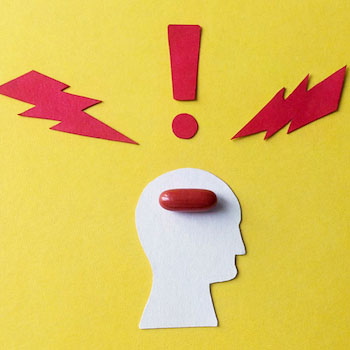Stimulants are included as ingredients in many dietary supplement products, including ones marketed for weight loss, energy enhancement, and pre-workout. If you’re considering taking a supplement that might contain one or more stimulants, it’s important to understand what they are, why they’re of concern, and how to identify them on product labels.
What are stimulants?
Stimulants are substances that can make you feel more alert, attentive, and energized, but they also can increase your heart rate and blood pressure. Most people consume at least one stimulant regularly: caffeine, which is found in coffee, tea, many sodas, and most energy drinks. However, numerous other plant-based stimulants—whether actually extracted from plant materials or replicated in the laboratory—are found in dietary supplements. Some are not approved for use in dietary supplements, and some are even controlled substances.
Why are stimulants a concern?
Stimulants are of concern primarily because they raise heart rate and blood pressure and otherwise increase nervous system activity. Taking too much of one stimulant or combinations of different stimulants can increase your risk of unwanted side effects. These can be mild—such as insomnia, jitteriness, or shakiness—to severe—such as heart attack and stroke. Even caffeine, which can be a performance-enhancing aid (when used appropriately), can be dangerous when used in large amounts. In fact, FDA warns consumers against the use of pure and highly concentrated powdered or liquid caffeine (sometimes sold as a dietary supplement product) due to associated deaths. For more information, please see FDA’s warning to consumers.
Not everyone who consumes stimulants will experience side effects, but whether mild or serious, they can have a negative effect on your performance. And some stimulants are stronger than others, so different stimulants have different effects on your body. In addition, many stimulants haven’t been adequately studied in humans, so their safety has yet to be determined.
How can you tell if your supplement contains a stimulant?
If your dietary supplement is marketed for pre-workout, performance or energy enhancement, or weight loss (for example, “thermogenic” or “fat burner” supplements), it probably contains a stimulant. With any supplement you’re considering, though:
- Look at the Supplement Facts on the label. A lot of stimulant names end in “ine,” such as caffeine, higenamine, hordenine, octodrine, synephrine, and yohimbine. Sometimes stimulants are easy to identify, but many stimulants have several names, which can make them challenging to identify. For example, octodrine is also known as DMHA, 1,5-dimethylhexylamine, 2-aminoisoheptane, and 2-amino-6-methylheptane.
- Visit the OPSS list of “Stimulants in Found Dietary Supplements,” which includes common names and synonyms for many stimulants commonly found in dietary supplements, plus links to more information about individual stimulants. However, there are many more stimulants that could appear, or have appeared, in dietary supplements.
- Read the fine print—especially the warning—on the label or marketing website. This often includes statements to avoid use with caffeine or other stimulants, if you have high blood pressure, or within a few hours before bedtime. These are indications that a product might contain one or more stimulants.
Are any stimulants prohibited for use by Service Members?
Many kinds of stimulants could be present in dietary supplements, but the following ingredients are on the DoD Prohibited Dietary Supplement Ingredients list at this time. This means Service Members should avoid products with any of these stimulant ingredients.
- 1,4-DMAA
- Acacia rigidula
- BMPEA
- DMAA
- DMBA
- DMHA
- Higenamine
- Ephedra
- Betaphrine
- Methylsynephrine
- Octopamine
Although FDA has ruled that these ingredients are not allowed for use in dietary supplement products, they still turn up on supplement labels. Make sure you compare the Supplement Facts panel of your product to the DoD Prohibited Dietary Supplement Ingredients list.
Want information about stimulants as a shareable graphic? Check out Stimulants: Get up to speed.
Updated 07 March 2022

